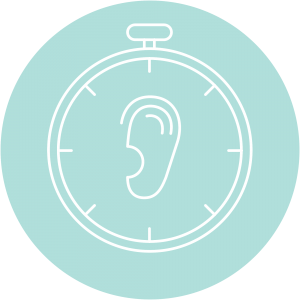Welcome to the Practice of Silence
The practice of silence is simple yet sophisticated. It’s a practice of peace, balance, harmony, awareness and gratitude.
When you first start to practice silence, the outside noise will slowly disappear. Then the internal noise, which is made of your wandering thoughts, will begin to vanish.
Many temptations will come up to try to distract you when you’re practicing silence. But over time, these temptations will dissipate, and your silence will draw you to a deeper level of consciousness. Your energies will become more focused and harmonized.
On the surface, the practice involves respecting your own silence and not interfering with the silence of others around you. Under the surface, it involves shutting down unwanted, useless external and internal noise.
Practicing silence requires effort and discipline, and it just might be one of the most challenging things you’ll ever do. It’s surprising how loud and testing silence can be. Particularly at the start, when you are not used to it.
This practice isn’t about locking yourself in a room 24/7 and never saying anything. It’s not about leaving your current life and becoming a monk. It’s about incorporating some silence into your everyday life to achieve balance and nurture your soul.
The suggestions below are simple and powerful ways to practice silence in your day-to-day life. We recommend starting with one and consciously sticking with it for at least a month—or until it becomes second nature and part of your routine.
Then add another from the list below. Again, stick with it until it becomes a habit. Keep building on your practice until the experience of silence becomes an integral part of your life and you start to feel its benefits.
Here are some simple and practical ways to introduce and build constructive silence into your daily routine, even in an overloaded life.

Intentionally disconnect from all sorts of external noise for certain duration every day. This way, you are mindfully reducing your distractions to simply observe silence.

Schedule at least two small periods of intentional silence every day: one in the morning, before you leave your house, and one in the evening. The session could be as short as fifteen minutes. While this could be done anywhere, at the start we recommend that you find a quiet room for this daily ritual.

After you’re comfortable with these shorter sessions, extend the duration to a few hours, a half-day, or even a whole day. These longer sessions are challenging to honour (especially at the start) but incredibly fruitful.

Consciously minimize the use of your electronic devices. This will significantly reduce the internal noise and the emotional roller-coaster ride that your brain goes through because of it.

When you have a strong desire to talk, choose to stay in silence. No singing. No humming. No talking to yourself. The more you listen to your silence, the louder it will become. Focus on your silence, not the sounds around you.

Try to consciously listen more during the day. This will automatically reduce the number of words you speak and the associated loss of energy. Also, this will inevitably make the practice of silence easier.

Be conscious of what comes out of your mouth and your motive for speaking it. Ask yourself whether it’s necessary or needless. This will slowly eliminate the superfluous-talking habit, as we often speak because we are bored and/or uncomfortable in the presence of silence, not because we have something meaningful to say.

Eat your meal in silence. With no distractions, you can put all your focus on your food. The same food you’ve eaten for years will taste unique and extra delicious.

Observe and journal your journey of silence. Here are some questions to consider at the beginning:
- How am I interacting with others without the use of words?
- What are some of the changes I’ve noticed in my life?
- How have my energy levels changed?
While you’re practicing silence, if you come across other people and simply acknowledge their presence or thank them for something (while walking in nature or buying groceries, for example), you have not broken the practice. In fact, if anything, you have made it even nobler by mixing it with gratitude. That said, the key is to keep your words to a minimum and continue to focus on your practice. It’s also perfectly fine to write or use gestures (very limited) to navigate through your day while you are practicing silence in a public setting, but remember to focus on your silence. Otherwise, the benefits of the practice will be compromised.
Ideally, silence should be practiced for at least an hour daily. As you start to see the benefits from this little time invested in silence and solitude, build on the momentum and make an effort for a continuous half-day and a full day once a week and month respectively.
The idea of being in complete silence for twenty-four hours likely sounds overwhelming, intimidating, and foreign. But once you start experiencing the profound power and benefits of this practice, you will be motivated to ultimately get to this point. The key to bring this practice and its associated benefits in our life is to consciously make a committed effort to start small and build on it.
Here is our humble proposal: consciously practice silence twice a day (for fifteen minutes to an hour) for one month. Then let us know about your journey of silence and what you’ve noticed.